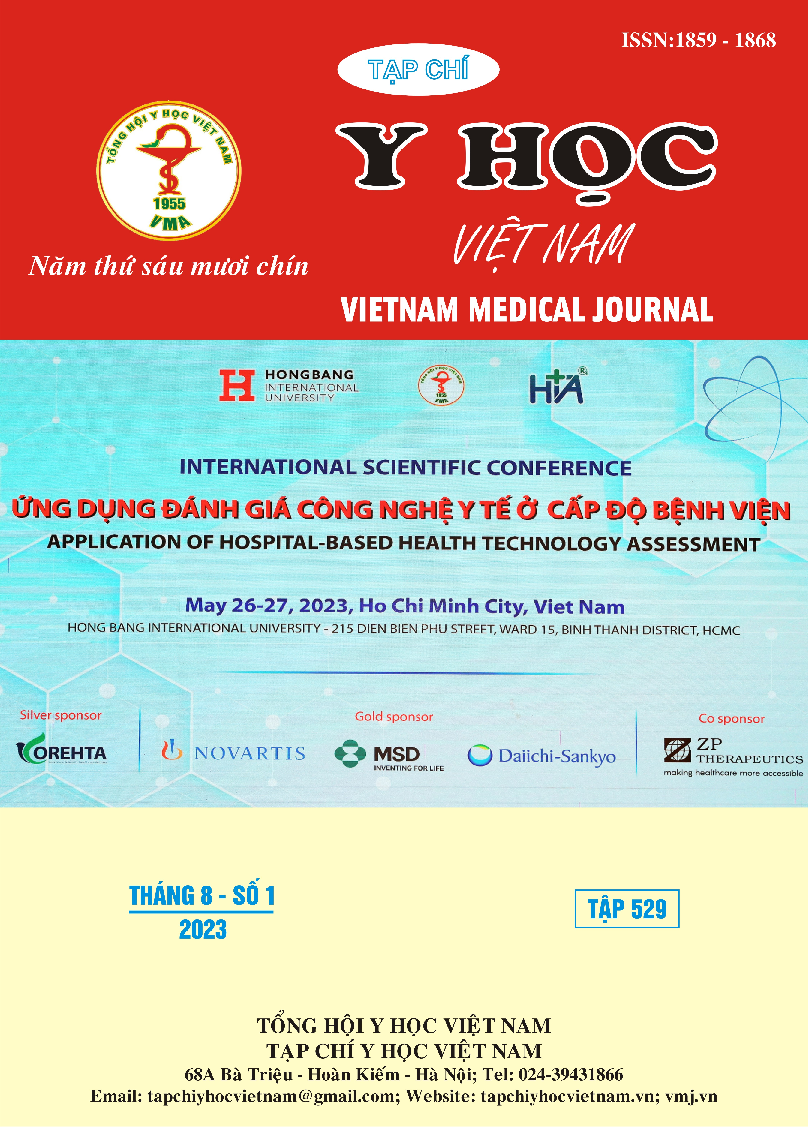ASSOCIATION BETWEEN AN ELEVATED GLYCEMIC GAP AND ADVERSE OUTCOMES IN DIABETIC PATIENTS WITH ACUTE MYOCARDIAL INFARCTION
Main Article Content
Abstract
Background: The association between acute hyperglycemia and adverse outcomes in diabetic mellitus (DM) patients with acute myocardial infarction (AMI) is still a subject of debate. A glycemic gap is introduced as a new parameter to evaluate the association between acute hyperglycemia and inhospital adverse outcomes in DM patients presenting with AMI. Objective: To study the relationship between glycemic gap and the occurence of inhospital clinical adverse events in DM patients with AMI. Methods: A prospective observational study was conducted on 100 diabetic patients with AMI admitted to the Interventional cardiology Department of Cho Ray hospital from March to September 2022. Admission blood glucose and HbA1c were measured and glycemic gap was calculated using the equation: glycemic gap = admission serum glucose level – (28,7 x HbA1c - 46,7) (mg/dL). The correlation and association between glycemic gap and clinical adverse events were evaluated using Pearson correlation and multivariate regression analysis. Results: We collected 100 AMI patients with DM (male:female ratio of 0.85:1) at average age of mean ± standard deviation (SD) = 65.6 ± 11.2. The median value of glycemic gap was 52.2 mg/dL (interquartile range: 39.0 - 94.4 mg/dL). There was a statistically significant strong correlation (r=0.634, p<0.001) and prognostic association between the glycemic gap and major adverse cardiac events (MACEs) that may occur to the AMI patients with DM during hospitalization. In the analysis of the ROC curve for glycemic gap value to predict MACEs, the optimal cutoff value of the glycemic gap was 56.9 mg/dL, with maximum AUROC of 0.917 (95% Cl = 0.865-0.969), (sensitivity 91.7%, specificity 79.7%). Conclusion: Elevated glycemic gaps were associated with an increased risk of major adverse cardiac events. Glycemic gap could be considered as an additional parameter to evaluate the impact of stress-induced hyperglycemia on inhospital clinical outcomes in diabetic patients with AMI.
Article Details
Keywords
: hyperglycemia, glycemic gap, adverse outcomes, acute myocardial infarction, diabetes, MACEs
References
2. Liao WI, Lin CS, Lee CH et al. An Elevated Glycemic Gap is Associated with Adverse Outcomes in Diabetic Patients with Acute Myocardial Infarction. Sci Rep. 2016 Jun 13;6:27770. doi: 10.1038/srep27770.
3. Ghanem, Y.M., Ayad, et al. Glycemic gap and the outcome of diabetic patients presenting with acute coronary syndrome. Egypt J Intern Med. 2022;10(1):34. https://doi.org/10.1186/s43162-022-00099-8
4. Nathan DM, Kuenen J, Borg R, et al. A1c-Derived Average Glucose Study Group. Translating the A1C assay into estimated average glucose values. Diabetes Care. 2008 Aug; 31(8):1473-8. doi: 10.2337/dc08-0545. Epub 2008 Jun 7. Erratum in: Diabetes Care. 2009 Jan; 32(1):207.
5. Bộ Y tế. Quyết định số 2187/QĐ-BYT. Quyết định về việc ban hành tài liệu chuyên môn “Hướng dẫn chẩn đoán và điều trị hội chứng mạch vành cấp”. 2019:1-33
6. American Diabetes Association; 2. Classification and Diagnosis of Diabetes: Standards of Medical Care in Diabetes—2021. Diabetes Care. 1 January 2021; 44 (Supplement_1): S15–S33. doi: 10.2337/dc21-S002
7. Zhu Y, Liu K, Meng S, et al. Augmented glycaemic gap is a marker for an increased risk of post-infarct left ventricular systolic dysfunction. Cardiovasc Diabetol. (2020) Jul 4;19(1):101. doi: 10.1186/s12933-020-01075-8.


